There’s a new post up at globaljabouble.com in which I finally end my months-long post-Russia silence, and talk about reverse culture shock, and the ways that my time in Russia continues to impact me.
Moving House
View From the Roof has a new home at globaljabouble.com. You can trawl through all the old posts there, and look out for new and exciting things to come!
Poland confused me.
What with it being located between Russia and “Western” Europe, and what with my latest experience being in Russia, and what with my experience in the Balkans pretty much directly south, I was expecting Poland to be sort of like a cleaner, more compact version of Russia. But when I arrived and Łuki started showing me around his town and nearby Lublin, I began to scratch my proverbial head.
“It’s kind of like… Southern California?” I ventured, as we walked through the more recently developed part of his neighborhood. The scrubby vegetation, bright flora, beating sun, and luxurious-looking tile-roofed villas added up. But the humidity, the small wheat fields in between luxury villas, and the Catholic churches on every corner did not. “Or maybe Spain?”
Wandering through the Old Town in Lublin, Łuki told me it’s been compared to Italy architecturally, but the bright pink and green facades contrasted with my mental image of Italy as a more gray and beige stone kind of place. Plus, Lublin has more spires than cupolas.
Hearing that Poland feels itself caught between the “east” of Russia and the “west” of Germany is confusing when for most of its history, Russia has grappled with an identity caught between the “east” of Asia and the “west” of Europe. And Poland is part of Europe, right? Central Europe? Eastern Europe? A former satellite state?
If Germans and even people from western Poland look on the infrastructure of eastern Poland with disdain, the autobahns must be paved with gold. Lublin’s grocery stores are just as small as in Arkhangelsk, but the potatoes are scrubbed clean and the fruit is plentiful and unmarked. The people are friendly and cheerful, but they size each other up on the street with what an American might call nosiness or even suspicion.
Finally, I gave up on trying to compare Poland to things and just enjoyed my time with Łukasz. Gently sloping hills, gorgeous lush green forests, ancient oak trees, herds of wild ponies: these things don’t need to be on a map to be beautiful. There will be plenty of time to try and understand Poland once I’m done trying to understand Russia.
At Home in the Abyss
I’m home again, in Greensburg, PA, after an eventful final month in Russia and one week in Poland.
Endings like this, more or less arbitrary cut-off dates for a certain chapter of your life, are something I’ve become used to with the academic calendar running my life for the last 17 years. But this is the first time that the end date hasn’t come coupled with a start date for something new. For the first time in my life, I have nothing in front of me– nothing but a wide expanse of possibility.
In the weeks building up to my departure from Arkhangelsk, that nothingness was terrifying and immobilizing. I spent the endless, pale nights sleeplessly searching for job openings either far above or far below my eligibility for them. The school year was over, and I had no schedule of classes to give me a semblance of structure. Just like the September before I arrived in Russia, I was suspended, waiting for the deadline before the next thing began. In the absence of constructive patterns, I fell into destructive habits and made exactly zero progress towards a job or graduate school or anything at all.
And then I went to Poland, and everything changed. Sitting beside the rushing waters of the Sopot River, I realized (if only momentarily) that life is like the river. I am sitting at one point on the river and to me it seems like a fixed object of noise and light and smell and beauty. But really, the water is hurrying by without rest. Even though to me it seems like my whole life is concentrated on the decisions I make now, really the decisions are secondary and no one point is more important than the others; my life will happen regardless of the decisions I make.
And then, I missed my flight from Warsaw and had to buy another one, and my small pot of buffer money was effectively eliminated. And my beloved car Toby broke down irreparably a few days before my arrival home. And I still don’t have a job.
And somehow this has freed me from the anxiety of feeling I had to produce a next thing before the current one ended. Now there is no current and there is no next. There isn’t anything now. But I feel at ease, serene even, shockingly unterrified by the lack of structure and certainty in my life at the moment. Even though I can already sense the hairline fractures in that serenity, for now, I’m letting myself hang out in this idea: My life has a direction that transcends the academic calendar and the framework of my ambition; I need to just open myself up to the opportunities that will lead me the way I’m meant to go; and certain themes and passions and interests and people and places will continue to pop up in my life regardless of whether I feel them at work there.
What’s In My Shower?
I’ve been watching YouTube makeup tutorials this evening, because apparently I’m now the kind of person who does that. So, I thought I would riff off of that into a blog format and show you What’s In My Shower! Mostly this is on my mind because, in the midst of my job-application and oh-my-god-I’m-leaving-in-two-weeks frenzy, the hot water is gone again.
The basic process is that you heat up water on the stove or in my case with electric tea kettles and then mix it with the cold water that still comes in great abundance from the tap. I didn’t have to deal with the autumn round of hot water shutoffs, so I never went to the trouble of buying myself a proper basin or a pouring device with a handle. And then the first time I had to deal with the hot water being off was the day before I left for Siberia. So I had to really improvise at the last minute, as so often happens in Russia! The first time I did this, I used a paring knife to cut off the tops of two old empty five liter water jugs, like so:
However, it turns out that when you pour boiling water into one of these, this is what happens:
So, I ended up using a casserole dish for the hot water, pouring cold water into my plastic jugs first, and mixing in the hot later. I used a small soup bowl to scoop up a little hot water and then let cold run into it from the tap until it mixed to an agreeable temperature, before pouring it over myself.
All in all, it wasn’t as bad or, more importantly, as time-consuming as I had thought it would be. It just takes a little creativity. And the discipline to carefully check each bowlful with your hand so you don’t accidentally throw a bowl of scalding water over yourself… like I did last night.
Anyway, just a short post tonight. I have to go take a shower.
Bags of Milk
Something I’ve never mentioned before, much to my shock and amazement, is the fact that sometimes, in Russia, milk is sold in bags.
I’ve never been able to rationalize this on any level. Liquids should just not go in bags. The end. Liquid goes in jars or cartons or bottles or cans, or sometimes, on rare occasions, in barrels, but not in bags.
I was in the grocery store this evening, puttering forlornly over the baked goods section, when I noticed a subtle line of tiny milk puddles on the floor. I soon traced the trail to a nearby cart, overseen by a beautiful blonde Russian woman with turquoise eye shadow. She was taking her shopping very seriously, but not seriously enough to notice the fact that her bag of milk was dripping all over the floor. I chose to ignore it, often the best course of action for a foreigner confronted with cultural differences in a new country.
Some ten minutes later, I found myself in the check-out line, two customers behind the lady of the drippy milk bag. She had blazed a trail all over the store, leaving little happy milk puddles in her wake, like those dotted lines from the Family Circus. She was still oblivious, even as she dumped the offending bag onto the conveyor belt. I watched with a sense of mounting doom as the bag slowly ringed itself in a halo of milk, approaching nearer and nearer to one of the crankiest cashiers in all of Sigma (according to experience).
And then a miracle happened. The cashier picked up the drippy bag, took in what had transpired, asked the woman if she still wanted it, while deftly folding the milk bag into another plastic bag. The customer declined, the cashier instructed her to get another of the same product. By the time the customer returned, the cashier had finished ringing everything else up. It all went by like clockwork, as if rehearsed down to the second.
And then I think about what would happen if this same situation occurred in some sort of parallel-universe America where milk is sold in bags, and it makes me sad that I’m going home soon.
Advice for Americans and other foreigners traveling long-distance on Russian trains.
As I mentioned, I was recently in Siberia, specifically in Kyzyl, the capital of the Tuva Republic. But before I can tell you about Kyzyl, I have to tell you how I got there. I took the train! This (obviously) makes me an expert on Russian long-distance trains, so I will share my wisdom with the rest of the world.
Accommodations.
Russian trains have three “classes”: In platskart, there are no doors and something like 60 people sleep on bunks together and share one bathroom. Kupe has separate compartments with four bunks each and a lockable door. And Luxe is fancier, but I’ve never been in it, so I can’t tell you what it’s like.
For my trip, I was in platskart for one day from Arkhangelsk to Moscow, and then kupe from Moscow to Abakan, for three days. There are pros and cons to kupe. There’s slightly more privacy, and if you find three friends to travel with you, you have a lot of security, because you can lock yourselves in. But, when it comes to being a young woman traveling alone, some say it’s better to go platskart, because that way there are more people around. You never know who might get locked into that kupe with you.
I was traveling alone half the way, until my colleague Anita joined up and occupied the other lower bunk of the kupe for the last two days. I had no problems in either platskart or kupe.
With all options, you get bed linens and a towel with which to create a tiny little domestic cubby on your bunk for however long the train will be home.
Food.
My first train experience, a short 24-hour jaunt to Moscow back in May, was not very pleasant, mostly because I was unprepared in the food department. The Siberian Adventure was much better.
Apart from my suitcase, I had a backpack stuffed with provisions, and never had to visit the restaurant car. I took with me: several liters of water, three apples, dried apricots, a package of smoked braided cheese, three baked pastry thingies, half a loaf of bread, sliced gouda cheese and salami (which was still okay, if a little greasy, after three days unrefrigerated), two packages instant mashed potatoes, two packages instant soup, cookies, crackers, a carton of juice, and a bunch of tea bags. Perhaps someday I’ll be skilled enough to bring pickles, packages of smoked salmon, jars of mayonnaise, and whole baked chickens, like real Russians.
I brought my own mug, utensils, an extra towel, and a package of paper napkins, after observing the super-prepared people in the bunks across from me in platskart on my way to Moscow last time.
The most important thing to know is that there is an unlimited supply of free hot water, which you get from a large, industrial-looking samovar tank at the head of the car, near the conductor’s compartment. So, you can make tea, instant coffee, and any other instant food to your heart’s content. You can also buy tea or coffee from the conductor for 15 rubles, and it comes in the wonderful, classic Russian train cups.
Hygiene.
Two words: Baby Wipes.
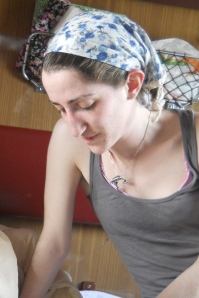 The biggest difference between Russian and American trains (apart from the fact that Russian trains are always on time) is that on Russian trains there are no showers. Russians carry moist towelettes around the way Americans might carry hand sanitizer, and I had taken to carrying them myself—but I am so glad I had a whole package of proper baby wipes with me on the train. It’s amazing how one or two of those, appropriately applied, can make you feel fresh and clean in the morning.
The biggest difference between Russian and American trains (apart from the fact that Russian trains are always on time) is that on Russian trains there are no showers. Russians carry moist towelettes around the way Americans might carry hand sanitizer, and I had taken to carrying them myself—but I am so glad I had a whole package of proper baby wipes with me on the train. It’s amazing how one or two of those, appropriately applied, can make you feel fresh and clean in the morning.
Also, while hot water is limitless, toilet paper might not be, so I suggest you bring your own. Basically, spend as little time in the bathroom as possible.
Finally, someone suggested a headscarf, and it was quite effective at helping me forget how unwashed my hair was after three days.
Entertainment.
Four days is a long time to sit in a confined space alone. I recommend enjoying the scenery, but there’s only so many hours of scenery one can handle in a day.
I brought more than I ended up using in terms of diversions, but that’s better than the alternative. I read A Clockwork Orange, which I’d been meaning to read since my first year of college, and which I enjoyed a lot less than I was expecting to. I also brought a Russian magazine and a book, and my dictionary, with the noble idea of working on my language on the train, but that didn’t pan out.
And of course I made sure to have my iPod fully charged before I left. There are a few electrical outlets in each train car, but it’s probably better to plan not to have to use them. My best decision was the suggestion from Randi (of course) to splurge on downloading the audiobook of Ian Frazier’s Travels in Siberia. It turned out to be really interesting and helped get me in the mood for my adventure.
The only thing I wish I’d brought is a map of Russia with the train route on it. The train stops pretty frequently, especially before actually getting to Siberia, and I kept wondering, How far have we gone? Have we crossed the Urals? Are we actually in Siberia yet? Where the hell are we?
After a while, though, I got used to it, and just enjoyed the rocking of the train and standing at the window in the corridor to catch an afternoon breeze in the heat of midday.

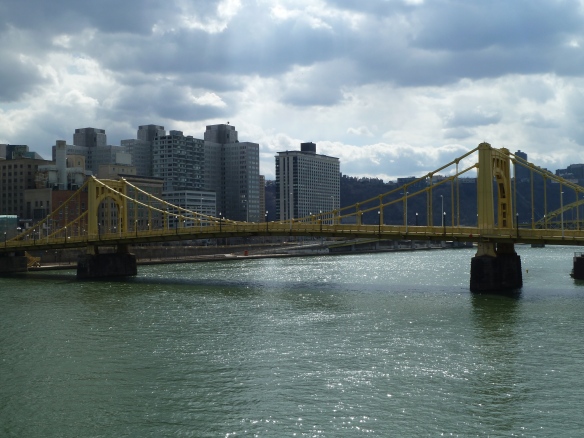
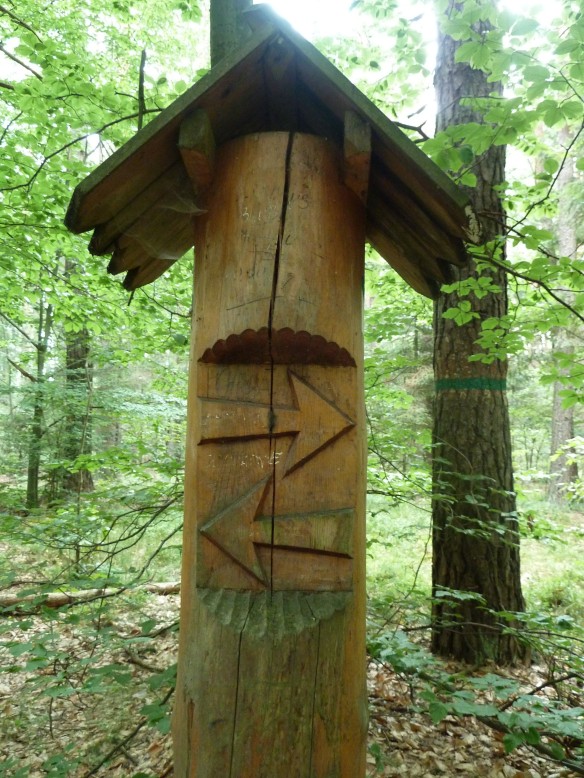

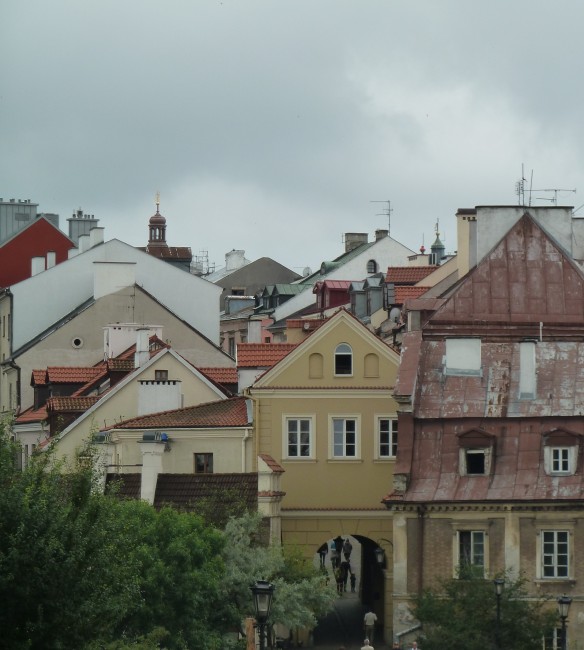
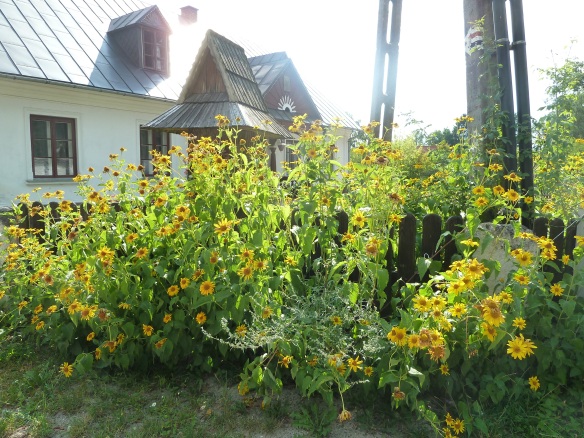
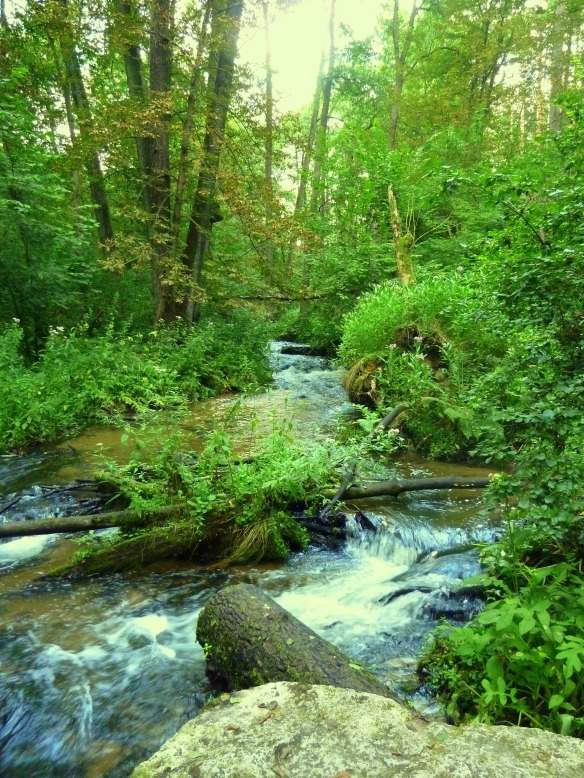
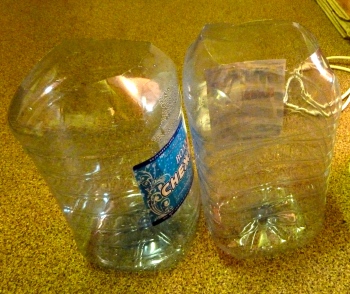
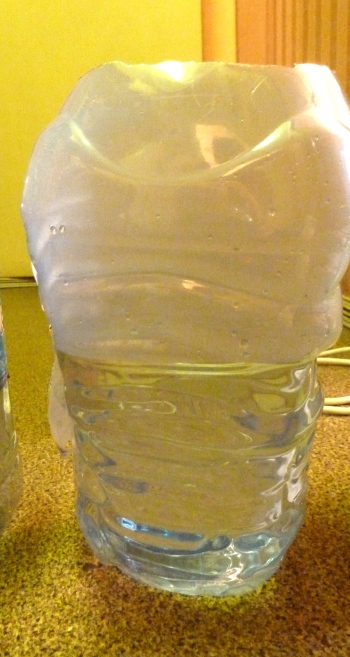
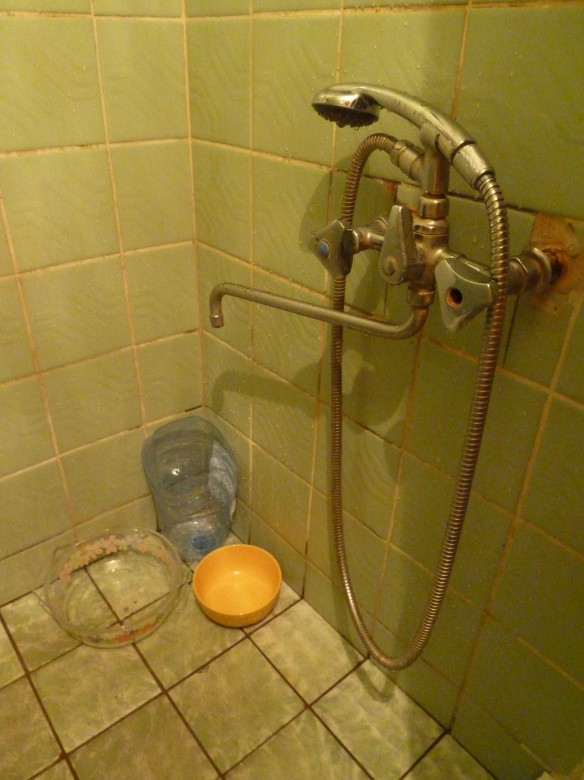
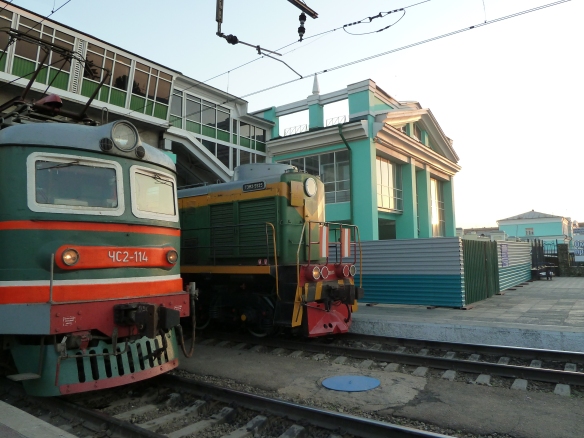
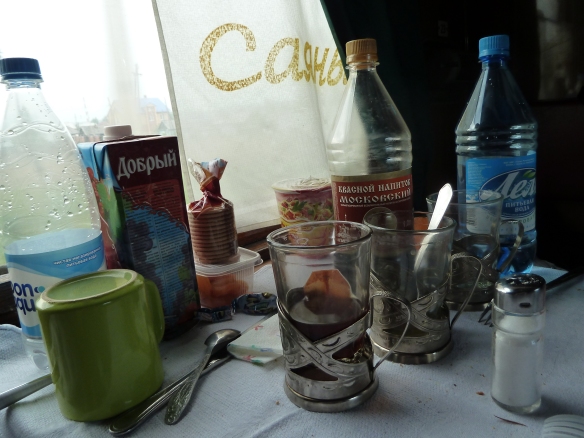

You must be logged in to post a comment.